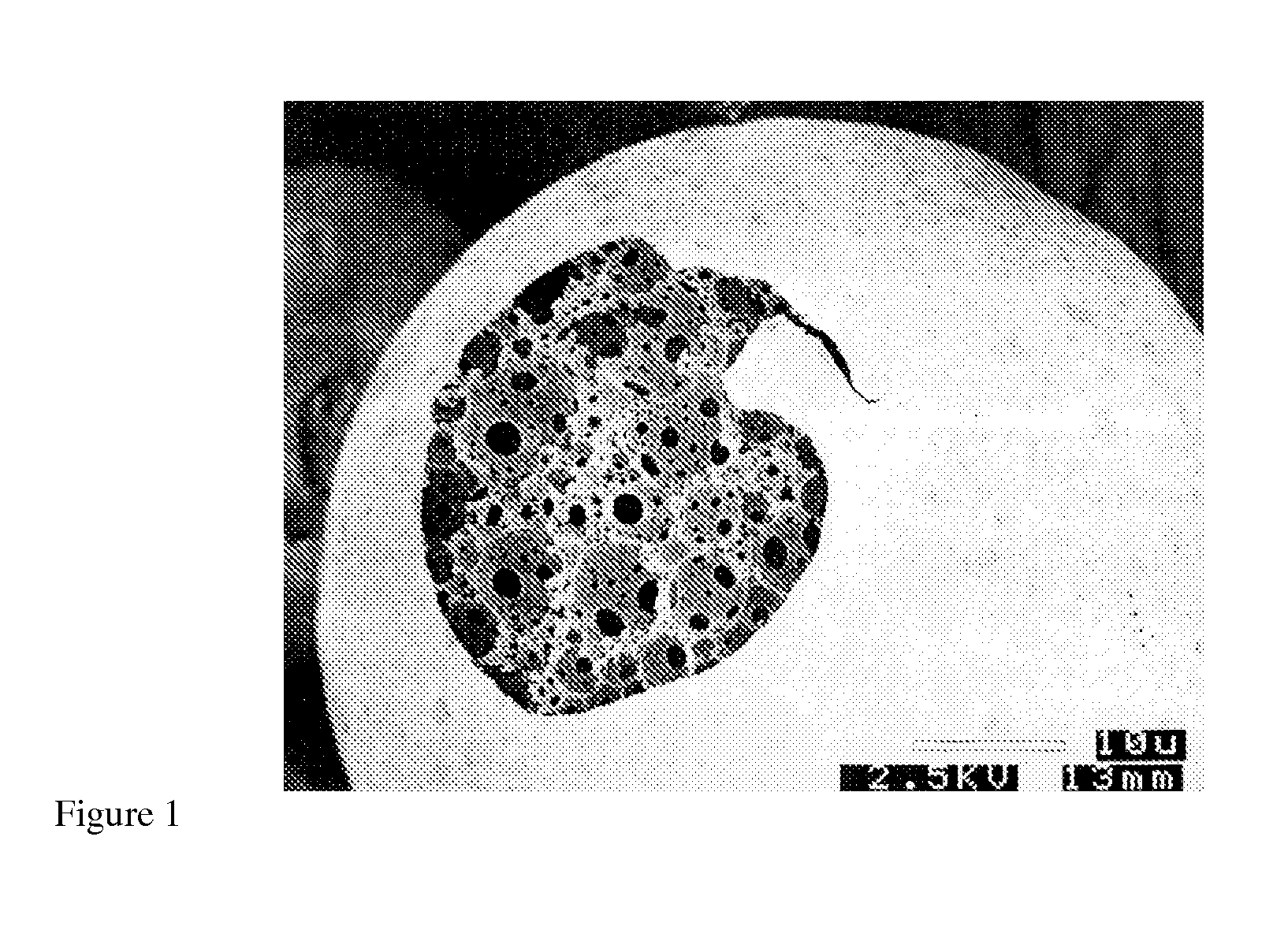Process for Reducing Residual Surface Material from Porous Polymers
a porous polymer and residual surface technology, applied in the field of methods for reducing residual surface materials, can solve the problems of large amount of polymer waste in grinding processes, irregular particle size, variability between product batches, etc., and achieve the effects of more desirable properties, higher resolution separation, and more efficient use of such materials
- Summary
- Abstract
- Description
- Claims
- Application Information
AI Technical Summary
Benefits of technology
Problems solved by technology
Method used
Image
Examples
example 1
Removal of Residual Surface Material Using Succinic Anhydride
[0081]Poly(styrene-divinylbenzene) HIPE microbeads are prepared via suspension polymerization using gelatin as a stabilizing agent (Li et al., U.S. Pat. Nos. 5,583,162; 5,653,922; 5,760,097; 5,863,957; 6,100,306). Ten grams of these microbeads (wet) are placed into a 2 liter glass reactor and 1.0 liter of distilled water in which 30 grams of succinic anhydride (97% from Aldrich) is dissolved is added under stirring. Approximately 20 grams of sodium hydroxide is then added into the mixture and the pH of the system is kept at 10-11. The temperature of the reaction is kept at 55-60° C. for at least 4 hours. The microbeads, now substantially free of residual surface material, is then washed and dried according to Li et al.
example 2
Removal of Residual Surface Material Using Hydrogen Peroxide
[0082]The microbeads are prepared as described in Example 1. Ten grams of the microbeads are placed into a two liter reactor and 1.0 liters of 3% aqueous hydrogen peroxide is added. The pH of the mixture is kept at 8-9, adjusted using 2% aqueous sodium hydroxide. This system is kept at 55-60° C. for 24 hours under mechanical stirring. The treated microbeads are then washed and dried.
example 3
Preparation of Polyvinylalcohol Microbeads
PUM
| Property | Measurement | Unit |
|---|---|---|
| temperature | aaaaa | aaaaa |
| diameter | aaaaa | aaaaa |
| diameter | aaaaa | aaaaa |
Abstract
Description
Claims
Application Information
 Login to View More
Login to View More - R&D
- Intellectual Property
- Life Sciences
- Materials
- Tech Scout
- Unparalleled Data Quality
- Higher Quality Content
- 60% Fewer Hallucinations
Browse by: Latest US Patents, China's latest patents, Technical Efficacy Thesaurus, Application Domain, Technology Topic, Popular Technical Reports.
© 2025 PatSnap. All rights reserved.Legal|Privacy policy|Modern Slavery Act Transparency Statement|Sitemap|About US| Contact US: help@patsnap.com


